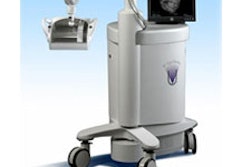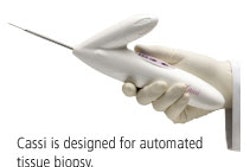CHICAGO - Off-the-shelf Internet technology is adequate to transmit digital mammography scans, allowing a radiologist specializing in mammography to receive, read, and interpret images hundreds of miles away, doctors said Tuesday in a presentation at the 2005 RSNA meeting.
"The ability to transmit that data securely and accurately could help the medical community overcome a looming crisis in mammography," said Dr. Alan Melton, assistant clinical professor of radiology at New York-Presbyterian Hospital and Columbia University Medical Center in New York City.
Paraphrasing astronaut Neil Armstrong, Melton declared that the ability to perform these tasks from a distance "is a small step for medicine, but a giant leap for women."
Melton reported on 1,314 cases in which a digital screening mammogram was taken at one site in New York City and then, using a typical broadband Internet link, was transmitted to his office 110 miles away in Avon, CT.
"I'm reporting on just over 1,300 cases," Dr. Melton said at a press briefing, "but we have actually done this more than 8,400 times. In all those times, we had just one image that had any distortion from the original." He said the image was resent without incident.
The use of Internet mammographic screening has reduced the waiting time for a mammography from six months to less than three months at his institutions, Melton said. He emphasized that the use of the Internet was applicable only for screening mammograms and not, at this time, for diagnostic mammograms.
"When you are dealing with diagnostic mammograms, you have to constantly ask the technician to take a picture from one area or another, and it is not practical for performing that work at a distance," Melton explained.
He suggested that use of the technique could find its way to underserved areas or for use by mobile mammography units if they can have broadband Internet connections. Satellite is not accurate enough to do the job of transmitting every critical pixel, he said.
"In our system it takes about 25 seconds to transmit each image during a digital examination," Melton said. While most digital mammography exams include several different image views, he said that the entire study could be downloaded to the mammography reader's workstation before the patients could get dressed and leave the office.
He predicted that extensive use of the Internet-based mammography screening world have numerous implications:
- It would improve efficiency and functionality of the workforce.
- IIt would eliminate backlogs for screening examinations.
- IIt would increase interpretation accuracy by providing steady work for readers.
- IIt would, therefore, likely decrease nerve-shattering recalls for ambiguous studies.
- IIt would stimulate more interest in the subspecialty, now suffering from waning interest.
By Edward Susman
AuntMinnie.com contributing writer
November 29, 2005
Related Reading
FFDM may make mobile breast cancer screening programs more viable, November 29, 2005
Digital library can ease transition to digital mammo, November 26, 2005
Harnessing technology, training to make the most of FFDM, October 3, 2005
Digital mammography presents PACS challenges, July 8, 2005
Digital mammo with CAD requires sharp eye for false negatives, June 30, 2005
Copyright © 2005 AuntMinnie.com



















